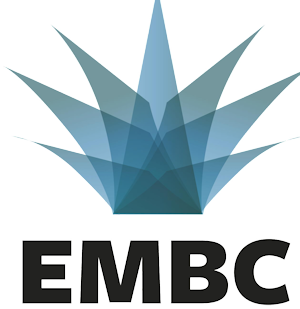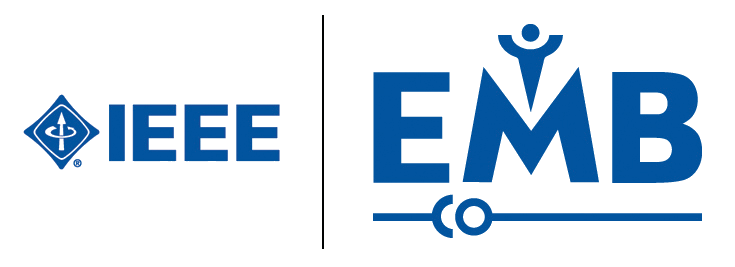

 43rd Annual International Conference of the
43rd Annual International Conference of theIEEE Engineering in Medicine and Biology Society October 30 - November 5, 2021, Virtual Conference


 43rd Annual International Conference of the
43rd Annual International Conference of theIEEE Engineering in Medicine and Biology Society October 30 - November 5, 2021, Virtual Conference |
Technical Program for Wednesday November 3, 2021 |
Click on To show or hide the keywords and abstract (text summary) of a paper (if available), click on the paper title Open all abstracts Close all abstracts |
| WeAT7 | LIVE |
| Mini Symposium Driver Drowsiness: Causes, Detection, Prediction and Alert
Organizer: Natividad Martinez Madrid |
Mini-symposium |
| 07:30-09:00, Paper WeAT7.1 | |
| Penzel, Thomas | Charite Universitätsmedizin Berlin |
| Glos, Martin | Charite-Universitaetsmedizin Berlin |
| Fietze, Ingo | Charite-Universitaetsmedizin Berlin |
| Krefting, Dagmar | HTW Berlin |
| Seepold, Ralf | HTWG Konstanz |
| Martinez Madrid, Natividad | Reutlingen University |
| Ahlström, Christer | Swedish National Road and Transport Research Institute (VTI) |
| Corcoba Magaña, Víctor | University of Oviedo |
| Teichmann, Daniel | University of Southern Denmark (SDU) |
| Nosseir, Ann | British University in Egypt |
| WeAT8 | LIVE |
| Mini Symposium: Verification and Validation of Computational Models in
Electrotherapeutics Organizer: Marc Horner |
Mini-symposium |
| 07:30-09:00, Paper WeAT8.1 | |
| Horner, Marc | ANSYS, Inc |
| Prakash, Punit | Kansas State University |
| Hadimani, Ravi L. | Virginia Commonwealth University |
| Rad, Laleh Golestani | Northwestern University |
| Brown, James | MSEI |
| Marciano, Tal | Novocure LTD, Haifa Israel |
| WeBT7 | LIVE |
| Keynote Speaker Theme 2 Julia Schnabel, Helmholtz Center Munich and
Technical University of Munich, Germany |
Keynote Session |
| WeBT8 | LIVE |
| Keynote Speaker Theme 4 Ricardo Armnetano, Universidad De La Republica | Keynote Session |
| WeCT7 | LIVE |
| Mini Symposium: Emerging Methods in Signal Processing, Machine Learning and
Control for Novel Investigations of High-Dimensional Brain Data Organizer: Catherine Stamoulis |
Mini-symposium |
| 11:30-13:00, Paper WeCT7.1 | |
| Stamoulis, Catherine | Harvard Medical School |
| Gao, Jie | Rutgers University |
| Daoutidis, Prodromos | University of Minnesota |
| Brooks, Skylar | Boston Children's Hospital |
| WeCT8 | LIVE |
| Mini Symposium: Computational Intelligence in Biomedical Engineering
towards Wellness through Prediction and Prevention Organizer: Ricardo Luis Armentano |
Mini-symposium |
| 11:30-13:00, Paper WeCT8.1 | |
| Armentano, Ricardo Luis | Republic University |
| Kun, Luis | Distinguished Professor Emeritus - |
| Pino, Esteban J | Universidad De Concepcion |
| Cymberknop, Leandro Javier | National Technological University |
| Chatterjee, Parag | Universidad De La República, Uruguay |
| Chairez Oria, Isaac | UPIBI-IPN |
| WeET7 | LIVE |
| Keynote Speaker Theme 7 Cesar Gonzalez, Instituto Politécnico Nacional | Keynote Session |
| WeET8 | LIVE |
| Trending Keynote Speaker - May Wang, Georgia Institute of Technology and
Emory University |
Keynote Session |
| WeFT7 | LIVE |
| Keynote Speaker Theme 5 Anna Bianchi, Politecnico Di Milano | Keynote Session |
| WeFT8 | LIVE |
| Keynote Speaker Theme 12 Guy Jean Leon Savoir Garcia, INCIDE | Keynote Session |
| WeGT7 | LIVE |
| Mini Symposium: Complexity in Cardiovascular and Respiratory Systems
Organizer: Guadalupe Dorantes Méndez |
Mini-symposium |
| 19:00-20:30, Paper WeGT7.1 | |
| Castiglioni, Paolo | IRCCS Fondazione Don Carlo Gnocchi |
| Bianchi, Anna Maria | Politecnico Di Milano |
| Barbieri, Riccardo | Politecnico Di Milano |
| Dorantes Méndez, Guadalupe | Universidad Autónoma De San Luis Potosí |
| Mendez, Martin Oswaldo | Universidad Autonoma De San Luis Potosi |
| Bojorges-Valdez, Erik Rene | Universidad Iberoamericana A.C |
| WeGT8 | LIVE |
| Meet with Leaders 3 (Pre-Registration Required) | Social Session |